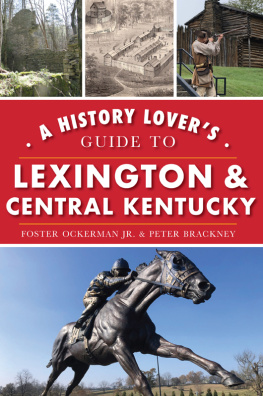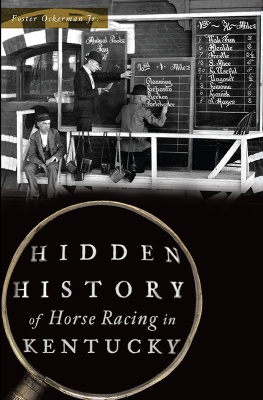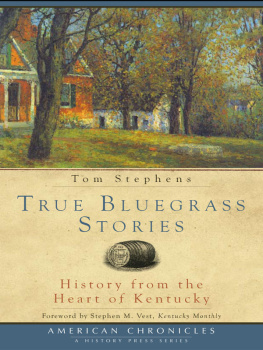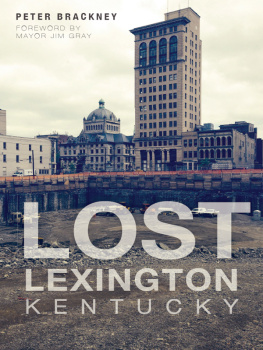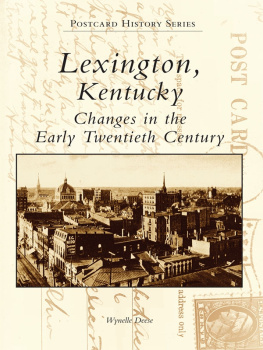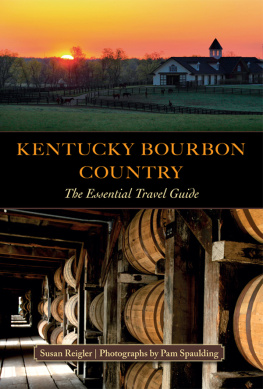Published by The History Press
Charleston, SC
www.historypress.com
Copyright 2020 by Foster Ockerman Jr. and Peter Brackney
All rights reserved
First published 2020
E-Book edition 2020
ISBN 978.1.4396.7134.4
Library of Congress Control Number: 2020938496
Print Edition ISBN 978.1.4671.4299.1
Notice: The information in this book is true and complete to the best of our knowledge. It is offered without guarantee on the part of the authors or The History Press. The authors and The History Press disclaim all liability in connection with the use of this book.
All rights reserved. No part of this book may be reproduced or transmitted in any form whatsoever without prior written permission from the publisher except in the case of brief quotations embodied in critical articles and reviews.
AUTHORS NOTE
History cannot be changed. What has happened in the past cannot be altered. However, it can be understood differently or more completely depending on the lens we use or newly discovered information. The view of events and people making history can be reinterpreted based on changing social mores and the contemporary understanding of justice.
In the early twentieth century, many Kentuckians interpreted the Civil War and slavery through a lens that romanticized the Souths Lost Cause. Today, society is properly recognizing the error in that interpretation. A changed understanding of the history of our nation, state, and region has resulted in the names of places being altered and certain memorials to the past being removed, relocated, or altered. This is not a loss of history; it is a retelling of history through a modern interpretation. This is not the first time such changes have been made in Lexington. As noted Kentucky historian Dr. Patrick Lewis, scholar in residence at the Filson Society, has observed with regard to statues, but equally applicable to site names: Their construction was a political decision. Their removal is a political decision.
In 2017, Lexington relocated two large statues of Confederates from the old courthouse lawn to the Lexington Cemetery. One of those statues was located in Cheapside Park. We reference Cheapside and explain the origin of that name (after a London, England market district) as well as highlight that it was in Cheapside Park where slaves were sold, both on the courthouse steps pursuant to court order and in private brokerage houses nearby. While final editing of this book was in process, Lexington mayor Linda Gorton announced plans to rename Cheapside Park as the Henry A. Tandy Centennial Park. Tandy was a freed slave who formed a successful masonry company in Lexington, Tandy & Byrd, which did the masonry work on construction of the old courthouse overlooking the park.
A few short days before the mayors announcement, faculty from the University of Kentuckys African American and Africana Studies program called for Rupp Arena to be renamed. Opened in 1976, Rupp Arena is named after Coach Adolph Rupp, who coached the universitys mens basketball program from 1930 until 1972 while leading the program to greatness and winning four national championships. Despite his success on the basketball court, the AAAS faculty assert that the Rupp name has come to stand for racism. As of this writing, it is unclear whether the basketball facility will be renamed.
Faced with our publishers deadline approaching faster than community decision making, we chose to use the names historically and presently associated with these places. Other name changes and even physical relocations could be forthcomingindeed, may be predictable.
Foster Ockerman Jr.
Peter Brackney
A CONCISE HISTORY OF LEXINGTON AND THE BLUEGRASS
What the colonists called the French and Indian War ended with the Treaty of Paris in 1763. The conflict was known among the major powers in Europe as the Seven Years War.
According to the terms of the treaty, France surrendered its claims in North America to England for lands east of the Mississippi River, and to Spain for those to the west. Englands King George III immediately drew a Line of Demarcation along the crests of the Allegheny Mountains intending to prohibit any of his subjects along the Atlantic coast from crossing the mountains. His reasons were partly economic (the war had been expensive and he didnt want to incur any more military costs), partly political (the various colonies had conflicting claims to the western lands), and partly strategic (to divert expansion of the colonial population north toward Nova Scotia and south toward Florida along the Atlantic coast). That, of course, did not deter adventurous men from probing the mountain ranges, looking for a way through the mountains.
This chapter explores the history of central Kentucky from its earliest peoples to the twenty-first century, from buffalo traces and Indian war paths to interstates. The precolonial history of Native Americans in the region, in particular, is rich and deep and not often explored in popular histories. It leads to conflicts with the frontiersmen breaking through the Allegheny Mountains, to colonial wars, and, with independence and statehood, the growth of Lexington and the other settlements in central Kentucky.
Two particular myths need to be debunked first, however dear these myths may be to the hearts of Kentucky children who were taught them: (1) the word Kentucky is not Indian for dark and bloody ground and (2) no tribes ever lived in Kentucky; they only hunted and fought there. There was and is, of course, no singular Native American language, and several tribes were active in Kentucky and Tennessee during our frontier period. In March 1775, Daniel Boone and others acting for the Transylvania Company were negotiating with the Chickamauga Cherokee tribal leaders to purchase a large area of land comprising what is now the central and eastern parts of Kentucky and Tennessee. One leader, Chief Dragging Canoe, opposed the sale. He threatened to make the land a dark and bloody ground if any White people attempted to settle there and left the conference. A treaty was eventually concluded, but it was negated by the legislatures of Virginia and North Carolina, which claimed the land. That Native Americans who lived in Kentucky are described in the following sections.
The true original meaning of Kentucky in its various spellings has not been determined, but a strong contender is the Iroquois word kentaki, which means place of level land or place of meadows. It is believed to have been the place name for where the Iroquois village of Eskippakithiki was located in the southeast corner of present-day Clark County to the east of Lexington. Daniel Boone and other early adventurers picked up the name and applied it more generally to the rolling lands of the Bluegrass Region, certainly full of meadows and level compared to the mountains down which they had climbed.
PRE-COLUMBIAN
The first peoples entered what is now Kentucky more than 11,500 years ago. The Clovis people, known for their distinctive spear points, were first. Their points featured fluted, chipped rock heads. The Clovis were hunter-gatherers living in extended family groups of one to two dozen and moved across the area. They hunted the megafauna of the time, mastodons and mammoths, as well as smaller game. Related family groups formed loose economic and social ties. Their period ended roughly 8000 BCE.
ARCHAIC
For the next two thousand years, the Archaic peoples lived in Kentucky. Like their ancestors, they were nomads and hunter-gatherers, but the nature of the game they hunted had changed. They also began experimenting with growing their own crops, as some groups began to make camps by streams and in caves. Axes appeared at this time, as did woven baskets, mats, and fishnets.


